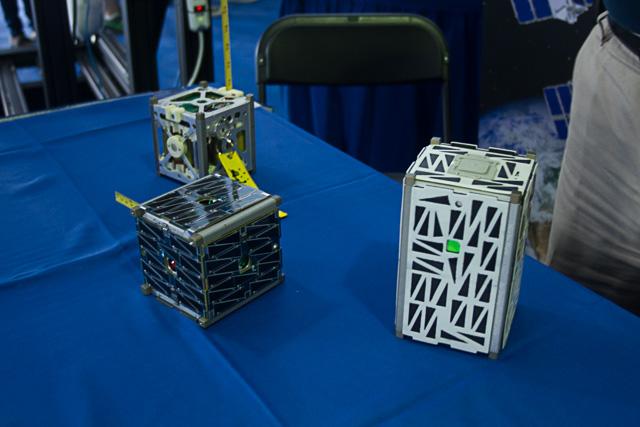Powerful SmallSat Imagers are Revolutionizing the Satellite Industry
There are now SmallSat imagers so small that they can fit in the palm of your hand. These specialized hyperspectral cameras are housed in SmallSats. SmallSats have completely changed the satellite game thanks to their lightweight design and commercial off-the-shelf parts. The cost of producing and launching SmallSats is often 100x less than traditional large satellites. A large satellite can cost over $100 million to build, while you can assemble a small satellite using a kit for a few thousand dollars! In this article, we will explore why SmallSat imagers are important and how they are changing the space industry.
What are SmallSat Imager Used For?
SmallSats are satellites that weigh less than 180 kg (about the same size as a fridge). Satellites often house cameras, also known as imagers. SmallSat imagers and their size can vary, with the smallest weighing 1kg and fitting in the palm of your hand. Most types of SmallSat imagers are used to take images of the Earth.
SmallSat imagers work by collecting radiation reflected from the Earth. There are a variety of different SmallSat imagers. Some measure infra-red, while others measure electromagnetic wavelengths. SmallSat imagers’ resolution is typically lower than traditional satellite cameras. However, thanks to advances in technology, these tiny cameras are now capable of taking detailed images of the Earth. Here are some of the use cases of small sat imagers:
● Predicting the weather – SmallSat imagers play a key role in tracking storm and cloud movement. Scientists use these images to predict when and where storms will hit and their severity. SmallSats can also be equipped with microwave instruments that can determine Earth’s temperature based on heat emission from oxygen molecules.
● Monitoring crops – SmallSats are being used to predict droughts and rainfall and even measure the moisture of the soil. All of these factors are being combined to accurately predict the success of harvests. Who would have thought that farmers would be teaming up with satellites!
● Spying – Countries are using SmallSats to keep an eye on each other! Satellite imagers are used to track Iran’s nuclear weapons program and were also used to track Russian troop buildup in the weeks and months preceding the invasion of Ukraine. SmallSat imagers have detected Chinese concentration camps where Uighurs are being held.
● Tracking natural disasters – SmallSat imagers are great at identifying and predicting natural disasters. These sensors can detect temperature around volcanoes and predict when an eruption will occur. They can also spot fires in remote areas before people are aware and track the damage caused by floods.
With so many use cases, it is no wonder that SmallSat imagers are taking over the space industry. They will only become more popular as their commercial use cases expand, the technology improves, and costs continue to shrink.
How are SmallSats Launched?
The SmallSat revolution is all about accessibility. SmallSats are low weight and compact. This means that multiple SmallSats can be grouped together and hitch a ride on rockets. SmallSats can also squeeze themselves onto existing rocket launches.
In the past, satellites were incredibly heavy and bulky. Rocket launches had to be designed to carry only one large satellite. As rocket launches cost hundreds of millions of dollars, so did the cost of launching a single satellite. Today, SmallSats have changed all that. Nowadays, a single rocket launch can successfully get dozens of SmallSats into orbit!
Thanks to the space industry becoming privatized, SmallSat operators no longer have to wait for a NASA launch to get to space. They can now choose from a range of private operators who are competing on price. Private companies can launch satellites for a few thousand dollars per kg of payload.
Will SmallSat Imagers Replace Large Satellites?
Based on the latest SmallSat imagers review, these tiny cameras will not replace traditional full-sized hyperspectral imagers. This is because SmallSat imagers have a lower resolution and signal-to-noise ratio. SmallSat imagers are a valuable complement to larger imagers. Scientists are adding SmallSat imagers to larger satellites or housing them in CubeSats. Due to their low-cost nature, researchers can launch more of these SmallSat imagers and create constellations cost-effectively.
Final Thoughts
SmallSat imagers are the future of the space industry! Everything in the space industry is becoming smaller, more advanced, and, best of all, cheaper. Private companies are now building cost-effective SmallSats using commercial parts. These SmallSat imagers are capable of taking high-resolution images of the Earth, which are improving our lives through accurate weather predictions, crop monitoring, tracking natural disasters, and even national security. Comment below what you think the SmallSat industry will look like in 10 years!



